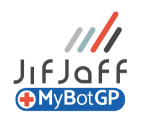About RPA – Robotic Process Automation
Robotic Process Automation (RPA) is the Automation of processes run today by clinicians & administrators. The Automation tool is software that mimics their process steps within the applications, i.e., EMIS(WEB), SystmOne or Accurx. These are not physical robots but software programs or workflows that execute the desired process.
Automation (the Robotic Process Automation (RPA) is just a digital worker)
The automation software accesses systems and applications like a human does (with a keyboard, mouse, and unique login credentials). The robots follow a process exactly how they have been coded to do, defined by clinical guidelines and rules established by the clinicians and/or administrators.
This means software robots can create reports, enter, or move data on systems, update dashboards, send emails, or perform entire processes in the background (such as Call/Recalls, Validation of Normal Blood Pathology tests, patient onboarding, patient bookings etc.). The primary purpose of Automation is to support teams to free time and lower costs by taking away mundane and repetitive tasks.
Intelligent Automation will give hundreds of hours back, remove errors, lower costs, and free key people to do more.
The benefits of RPA within Healthcare:
- Significantly reduce costs.
- Free clinician time.
- Free up administration.
- Help maintain “patient service levels.”
- Help support patient care by enabling you to do things you would not usually have time for.
- Automation provides a “proactive approach”, ensuring Clinical & Administrative tasks are performed on time with minimal wasted staff input.
How we ensure they are used ‘fit for purpose’:
- The Automation is aligned with NHS data privacy regulations, and data is kept within country boundaries in line with GDPR.
- The clinical decision-making approach is replicated. Nothing “new is invented”. The Automation aligns with your current working method, and you will have complete visibility and audit logs.
- The solution using the software is architected for enterprise-level security, compliance, support, and audibility. Only authorised personnel of the enterprise can access or manipulate data.
- Governance: Establish policies, procedures and standards for Bot qualification, development & deployment to meet audit, regulatory, and information security requirements.
- Education: As with any initiative, there can be resistance from various levels, groups and/or teams, as people often don’t like change.
Stop working with outdated systems and masses of work! Automation sits within a team, replicating what we do, so we don’t have to use our time doing things that are not complicated or follow predefined decisions.
